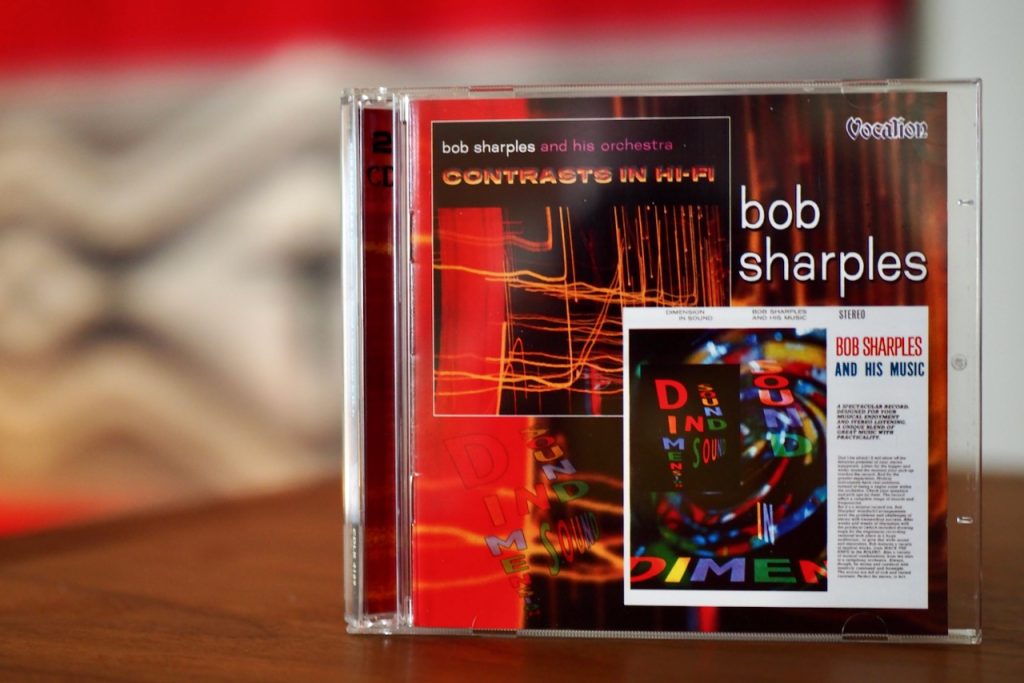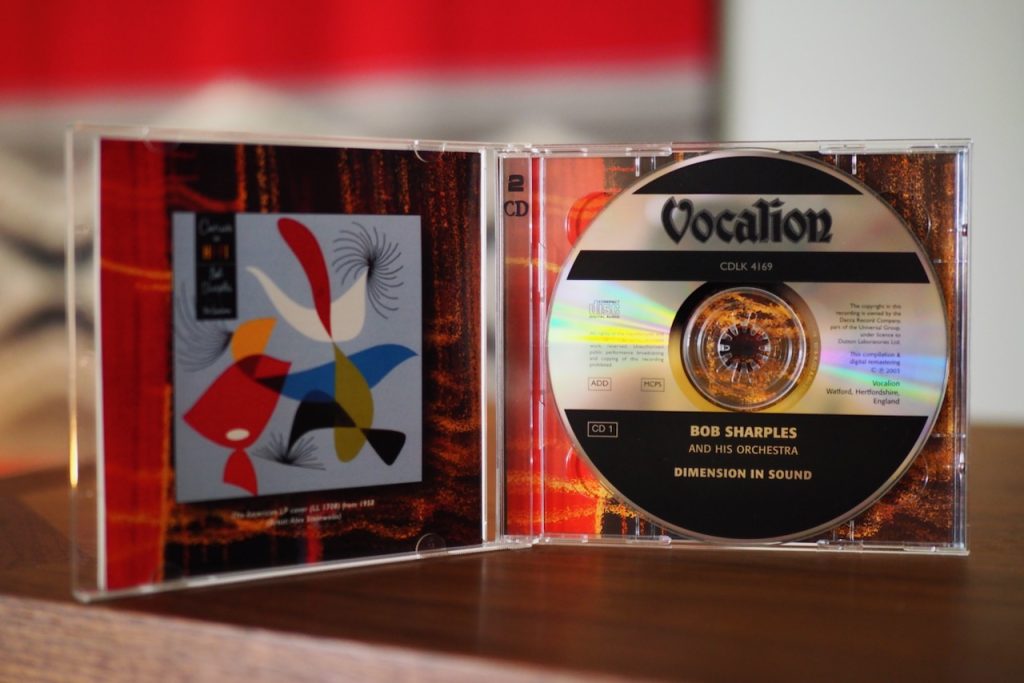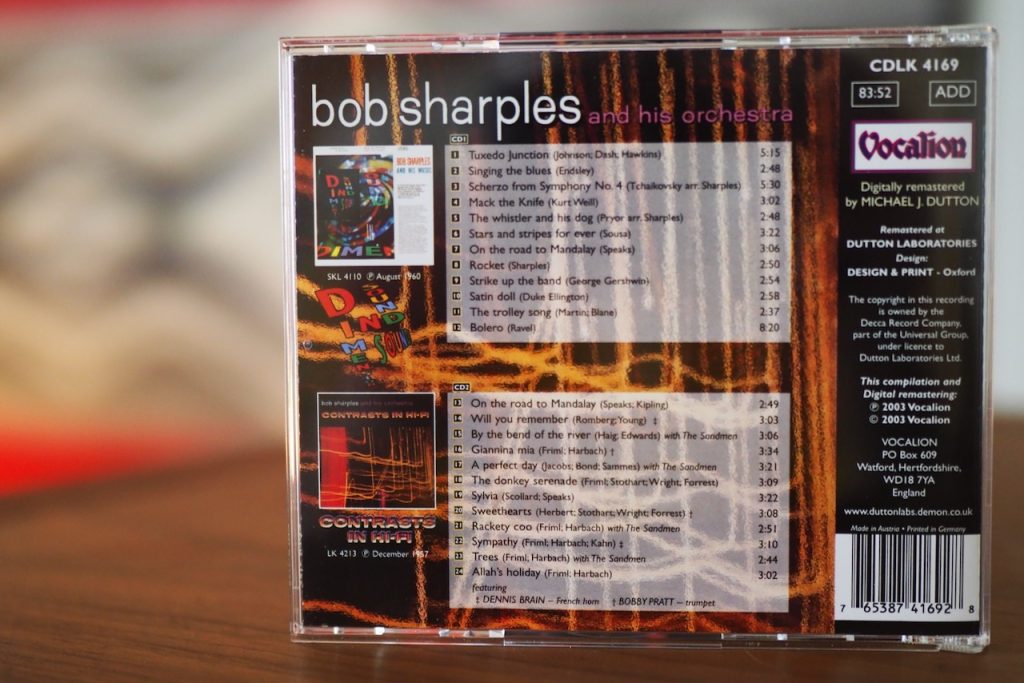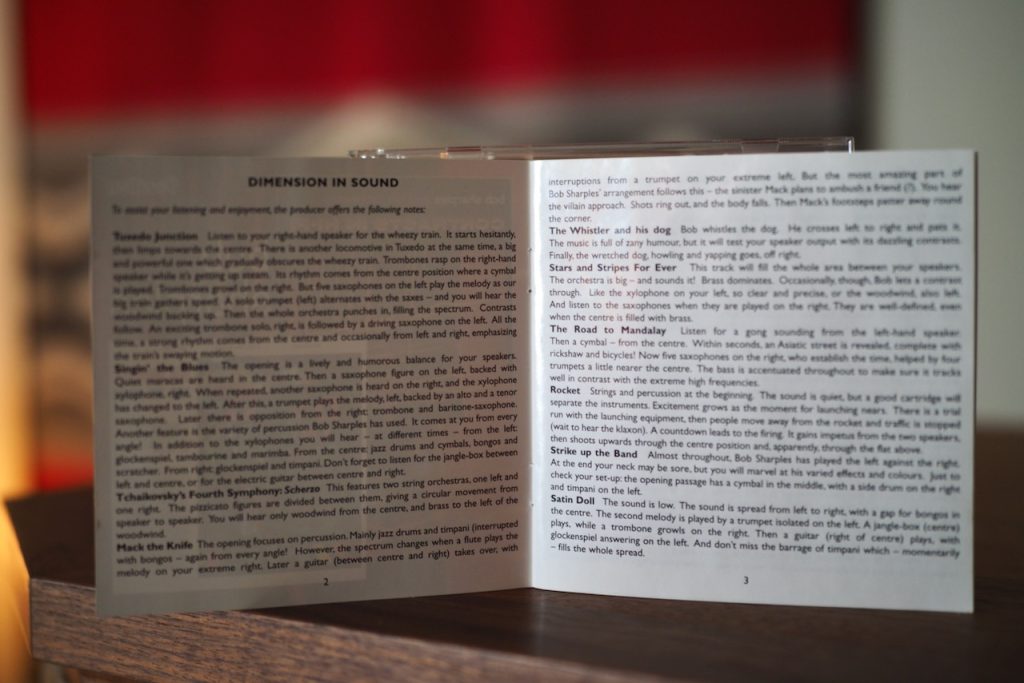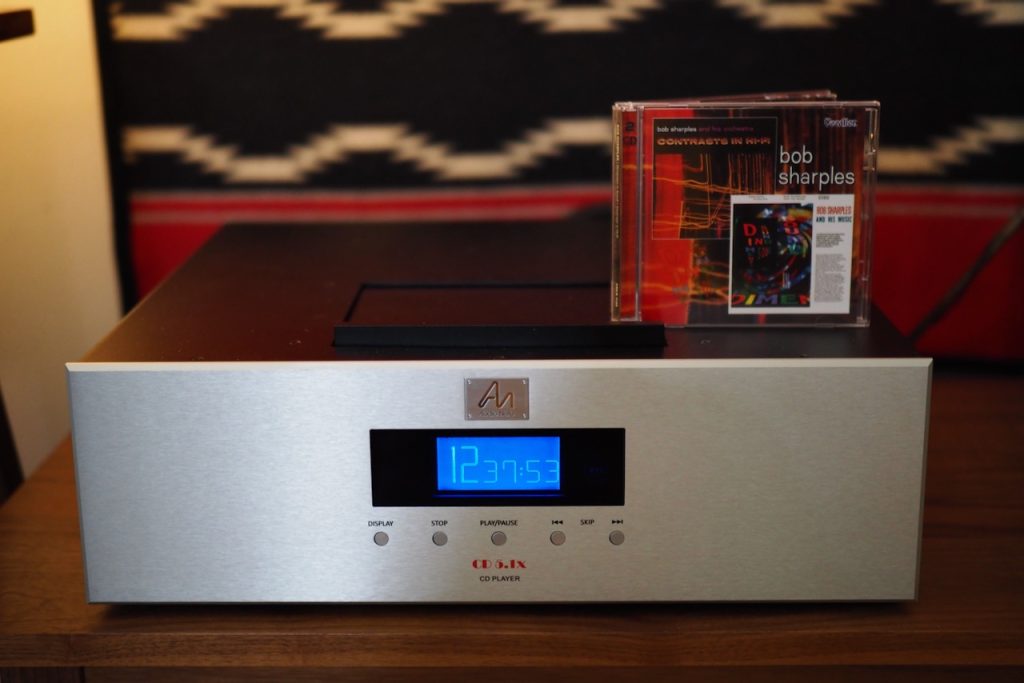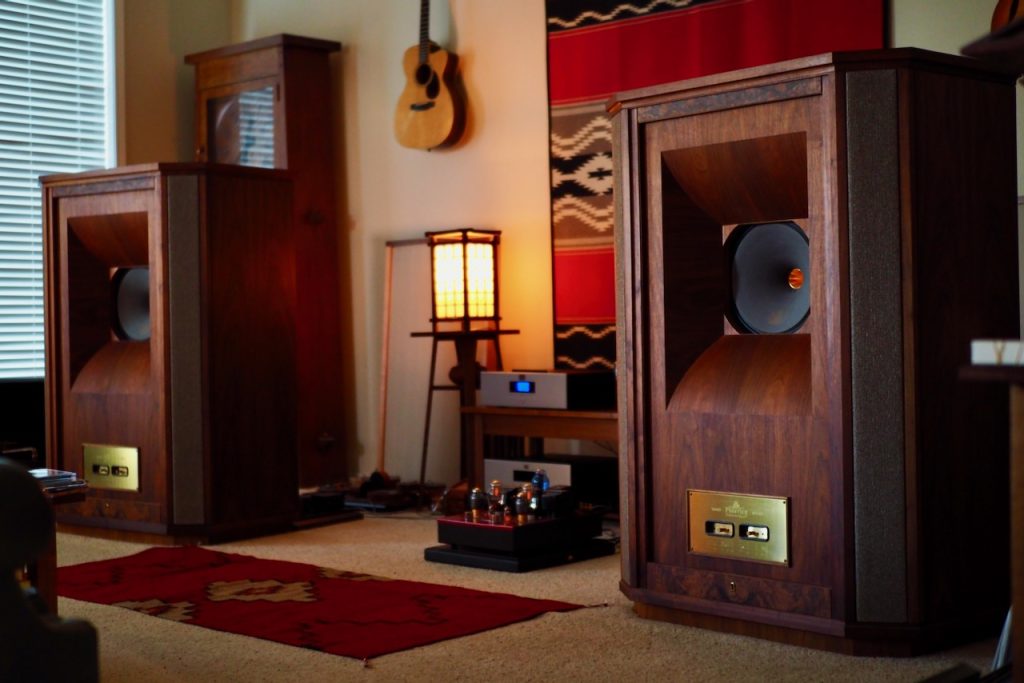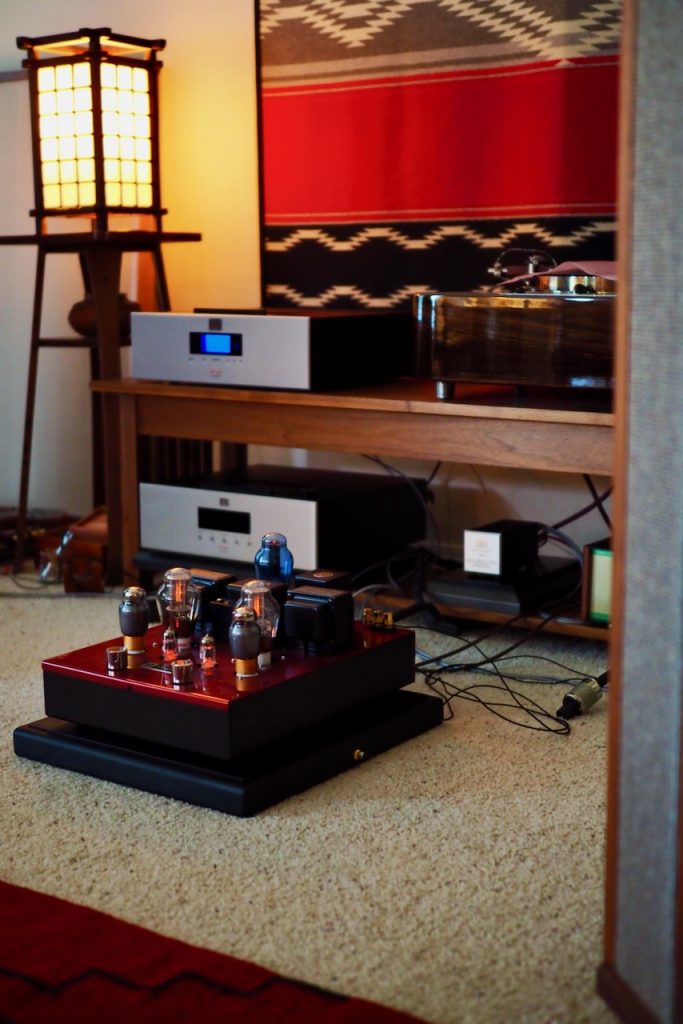It just sort of fell into my hands while I was looking at CDs in my collection to play through the Audio Note (UK) CD 5.1x CD player, Triode Lab 45 EVO SET integrated amp, and Duelund-ized Westminster Royal SE loudspeakers combination of hi-fi kit.
Bob Sharples' Contrasts in Hi-Fi and Bob Sharples and His Music LPs are combined on the UK's Vocalion label as a 2 CD set (CDLK 4169). The credits say these two albums were digitally remastered by Michael J. Dutton at Dutton Laboratories.
You can buy this CD set on Discogs for less than $10 USD. You could get the whole set of this CD compilation and the original LPs for less than $100 USD.
Contrasts in Hi-Fi and Bob Sharples and His Music LPs (1957) were issued by Decca Records (London Records in the US), and were unapologetically nerdy audiophile "stereo sound spectacular" focused releases, and are notable milestones in early audiophile recordings.
From the liner notes, written by Bob Sharples:
"When I was first approached by Ray Horricks of Decca about this album, my reaction was one of great excitement, for here was a chance to use stereo in the best possible way. For a long time I had been convinced to go ahead with ordinary orchestration and leave it to the recording engineers to achieve the stereo effect by putting microphones all over the place was putting the cart before the horse."
"The answer was to plan in three dimensions from the start. The best example of this technique that I had heard up to then were those which employed a smallish percussion group. Percussion instruments are ideal in this medium for two reasons - they make themselves felt immediately and effectively, and having said their piece they die away quickly, leaving the way clear for the next performer."
"However, as far as I knew, no one had achieved quite the right sound using a large orchestra, so we went to work. We conferred with studio engineers; diagrams were drawn up; we got through a lot of midnight oil and finally I went to work on the scoring. Bolero and the extract from Tchaikovsky's Fourth Symphony need special mention inasmuch as, although they sound the same musically as originally written, they have been in fact completely re-scored for stereo; thus the Fourth has two complete string sections, one either side, and Bolero produces an effect of great movement by modified scoring and altered placings. The sessions were great fun to do and I hope our sense of enjoyment communicates itself to you when you put the results on your turntable."
So here's the setting: Here we are in the early mid-part of the the magnetic recording era (1945 to 1975) and we hi-fi nerds were excited about listening to the new-fangled high-fidelity stereo recordings, and "independent arranger, conductor and musical director" Bob Sharples thought he could maximize the arrangement possibilities of stereo so we could have a little extra geeky stereo fun.
The liner notes include specific comments for each selection that articulates what to listen for in terms of stereo visuospatial effects. These are the sort of recordings that spawned the idea of soundstage and imaging performance, that would later be popularized by hi-fi writers as an aspect of performance commentary in audio reviews.
While I love serious music, there is an undeniable audio fun & games sort of vibe when listening to these sorts of albums that just seems to put a smile on my face.
Context: My Tannoy Westminster Royal SE loudspeakers based system is setup in audiophile-style fashion with the speakers well out into the room to maximize soundstage and holographic imaging aspects of the recording arts (i.e. the visuospatial aspects of recordings), while maintaining natural tonality and musicality.
Audiophile focused recordings, like those of Bob Sharples, "pop" to eerie life in this sort of hi-fi setup utilizing high-sensitivity loudspeakers, fine single-ended-triode amplification, and in this case the integrated version of the Audio Note (UK) CDT Three transport & DAC 4.1x balanced vacuum tube DAC combination that is the Audio Note (UK) CD 5.1x CD player as a source (more HERE).
I know, properly the CD 5.1x is called "CD player" by Audio Note (UK), but it is really way more than that. It's like calling the Audio Note (UK) Ongaku integrated amplifier just an integrated amplifier, and missing the point that it is one of the great audio amplifiers on Planet Earth. Ditto for the CD 5.1x in terms of digital playback.
For vinyl aficionados, what that means is the CD 5.1x elevates CD digital playback to a realm that is normally associated with the playback of high-fidelity LPs, about which I'll be going into more detail in future posts.
So what did I hear?
In terms of the audio spectrum, this CD set has that classic audiophile brilliance range (6 kHz to 20 kHz) boost that makes a recording sound more "hi-fi", and the presence range (4 kHz to 6 kHz) is right at the limit of clarity and definition, without becoming overtly forward or harsh sounding.
In other words, this is a classic audiophile balance that makes the listener focus on stereo imaging and soundstage effects, just as Bob Sharples intended for his arrangements.
That audio spectrum description is not a diss of audiophilia, it's just what hi-fi nuts wanted to hear in high-fidelity stereo recordings during that period of audio history, and for today's listeners it can just be a fun listening indulgence that puts you in touch with audio times past.
The second number on the Bob Sharples' Dimension In Sound album is "Tuxedo Junction", and according to the liner notes you are supposed to be listening for:
"The opening is a lively and humorous balance for your speakers. Quiet maracas are heard in the centre. Then a saxophone figure on the left, backed with a xylophone, right. When repeated, another saxophone is heard on the right, and the xylophone has changed to the left ..."
So the idea is that you read the description of what to listen for in each selection, then you listen for it, and enjoy the listening thrill.
There is some practical value to this sort of fun, as it trains the listener to develop more listening acuity, picking out the identity of the instruments to the left, middle, and right of the soundstage, and as they layer back into the depths of the soundstage.
As you would expect, the imaging is spectacular, and the soundstage is wide, deep, and layered, to produce a very captivating and entertaining listening experience.
Each selection on each LP/CD is like that, a lot of listening fun & games are to be had if you don't take it all too seriously.
Hint: If your name is Chad Kassem I think these Decca albums would make excellent 45 RPM Analogue Productions vinyl releases that harken back to the dawn of audiophile listening, in the same sort of spirit as The Wonderful Sounds Of releases. Just a thought.
If you are looking for some uncomplicated, nerdy, hi-fi enjoyment that amazes you with its artful arrangements and impressive imaging and soundstaging attributes, these Bob Sharples albums are classic audiophile milestones from an earlier era of audio that I think you will enjoy.
As always, thanks for stopping by, and may the tone be with you!




